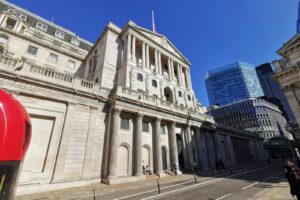The London-based ESG Advisory and Portfolio Analytics firm, has today released a clinical assessment of the state of ESG integration in the European fund management industry.
In its inaugural ESG Barometer report, MainStreet Partners details progress made since Europe’s Sustainable Finance Disclosure Regulation (SFDR) came into effect almost a year ago (10 March 2021).
The research is based on the firm’s proprietary ESG database of UCITs funds and ETFs, which was created in 2014 and today comprises around 4,200 funds/ETFs and over 50,000 individual ISINs. It covers more than 160 Asset Managers, whose products within the universe collectively represent €5.6 trillion in assets under management.
The report, conceived to cut through the mass of data and contradictory information available to investors, provides:
- An independent appraisal of asset managers and their efforts to offer more sustainable investment solutions
- Fund level analysis of those claiming to be serious about ESG
- An account of current regional and asset class divergences, including an unvarnished review of ‘greenwashing’
- Discussion of some of the most innovative and emerging trends gaining traction in the ESG space
Key takeaways:
- Over two-thirds of funds (70%) are classified as Article 6. Article 8 funds total 25% of the universe, with the remaining 5% represented by Article 9 funds. The expectation is for the bulk of new strategies to be classified as Article 8 over the coming quarters, given the high degree of diversity within that particular category.
- Around a fifth (21%) of Article 8 funds achieved an ESG rating of 3 or below from MainStreet Partners (out of a maximum of 5), mainly due to pillar 2 (Strategy) and pillar 3 (Portfolio). See methodology for details.
- Europe still leads the way on sustainability disclosure, regulation and ESG integration, while the US is solely starting its journey.
- In assessing varying asset manager sizes through the lens of MainStreet Partners’ holistic three-pillared approach, medium & large asset managers outperformed boutiques in pillar 1 (Asset Manager), whereas boutiques took the lead for pillar 2 (Strategy) and pillar 3 (Portfolio).
- Multi-asset funds tend to have a lower degree of ESG integration within their investment objectives, while also not being as aligned to the Sustainable Development Goals as other categories or sectors. In general, multi-asset funds scored lower than their fixed income and equity counterparts for Article 6 & 8 classified funds, and roughly 12% below the other asset classes when it came to Article 9 funds.
- From a thematic point of view, most funds remain focused on environmental themes, with social themes accounting for only 7%. Since most thematic funds are classified as Article 9, there have been strong flows into these types of products. With regulatory trends firmly focused on achieving various net zero targets, Article 9 environmental funds have an average of EUR 1.3 billion in assets under management as opposed to Article 9 social funds with an average of only EUR 384 million.
Commenting on the findings, Neill Blanks, Research Director at MainStreet Partners, said:“It is not an exaggeration to say the European Sustainable Finance Disclosure Regulation, which came into effect on 10 March 2021, was a game changer for investors. While not yet perfect, SFDR provided a universal identification and disclosure framework for sustainability risks – something previously absent in the asset management industry.
“Overall, we have observed a high degree of correlation between the introduction of SFDR and subsequent improvement in ESG Fund ratings. But while the classification of funds under Article 8 and 9 for SFDR purposes has certainly correlated with larger inflows into these products, assessing the degree of genuine ESG integration in those same funds has become more difficult due largely to the diversity of products available and the absence of a single standard for ESG-aligned products.”
Simone Gallo, Managing Director of MainStreet Partners, adds: “Our aim is to produce statistically robust, easy-to-understand and consistent sustainability ratings for investors. That is why we developed our proprietary three-pillar methodology back in 2014, and why we publish research that highlights where progress has been made but also where more needs to be done.
“We hope to see greater alignment between the SFDR Article labels on funds and our own ESG ratings as asset managers continue their work to transition investment processes and strategies. Otherwise, there is a risk that accusations of greenwashing begin to gather more credence, which would be damaging for the industry as a whole, and for investors’ trust in sustainable investment approaches.”

















